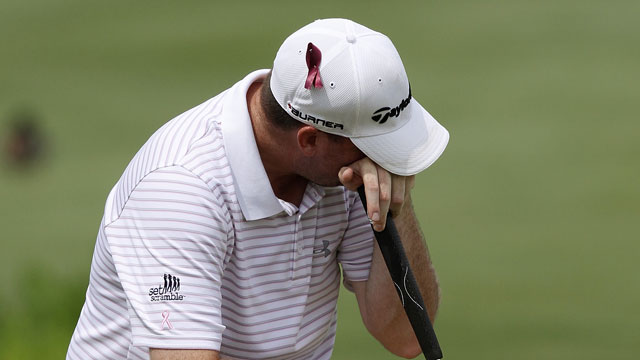NEWS
A Lesson Learned: Finish the race with what put you on top
By Doug Wade, PGA
Published on

You have to feel for Robert Garrigus. To be so close, to have that first PGA Tour win so firm in your grasp as you stand on the 18th tee of the final round and not walk away with the trophy, he'll be thinking about the events of that hole for a long time to come, I'm sure.
Congratulations to Lee Westwood, the guy who almost didn't get to play in this tournament due to sponsor conflicts, and now walks away the winner of the St. Jude Classic. He played great golf and showed his championship experience by outlasting Garrigus and Sweden's Robert Karlsson in a three-man playoff for the title. But in all honesty, he may have the trophy but he wasn't the story.
By now, everyone knows the story. Garrigus has a three-shot lead going to the 72nd hole of the tournament, he pulls his tee shot into the water on the left, hits a tree on his third shot which forces his fourth to be a sideways chip out and then has to two putt from forty feet, including a clutch five footer just to make triple bogey and make the playoff. But one thought stood out to me, one that serves as a lesson for all golfers, at all levels, to learn from the unfortunate unfolding of events for Garrigus.
All week, Garrigus had been hitting his three wood off the 18th tee and hitting it very solid. But with the pressure on and the championship seemingly in his hands, he went for a hybrid club instead of his steady three wood. My question is, "Why?" It's as if he was thinking what the announcers in the booth might be saying and trying to play it ultra-safe. But that's not what put him in position to win. He is a long hitter, a streaky player, one who has to ride the wave of momentum when he has it -- and he certainly had it all week. But he went away from his plan in order to play safe -- or so he thought.
Often, when you try to play defensive, your body slows from it's natural rotation on the downswing, resulting in your arms getting ahead of the body and the club-face closing down, causing you to hit it left (if you're a right-handed golfer.) This was the error that led to the incredible triply bogey finish for Garrigus.
Now some may argue that hitting a three-wood brought other trouble into play, such as the three wood he hit on the first playoff hole that he struck perfectly, and it happened to roll through the fairway and get stuck dead behind a tree. Well, one, that was just a bad break. That was twenty to thirty yards longer than he had hit the three wood all week. And secondly, he ended up with a bogey five on that first playoff hole. It was bad then because it knocked him out of the tournament but how would that five have worked for him if he had made it on the 72nd hole?
All golfers, on every level, will encounter important milestones as they improve. Whether it's to break 90, break 80, make a cut or win a tournament. Many, probably most, are going to stumble a few times before they break through. I'm working with a student now who has shown remarkable improvement in the last few months and just had a chance to hit a major goal for him. In fact, after 15 holes, he was sitting at three-over par with a great chance of breaking 80 for the first time. He then realized his position, got a little defensive and finished double bogey, double bogey, bogey to shoot 80 on the number. He was disappointed of course, but he understood why it happened and is eager to put himself in that position again soon.
Many lessons deal with how you should act when you are playing poorly, when you need help in a certain facet of your game. But a very important lesson, is how to respond when you are playing well, how to not get in your own way. If you're going to accomplish a goal, accomplish it on your terms, don't fail because you went away from what brought you to the brink. It's a lesson that Robert Garrigus will remember for a long time, but one I hope serves your game for the better.
